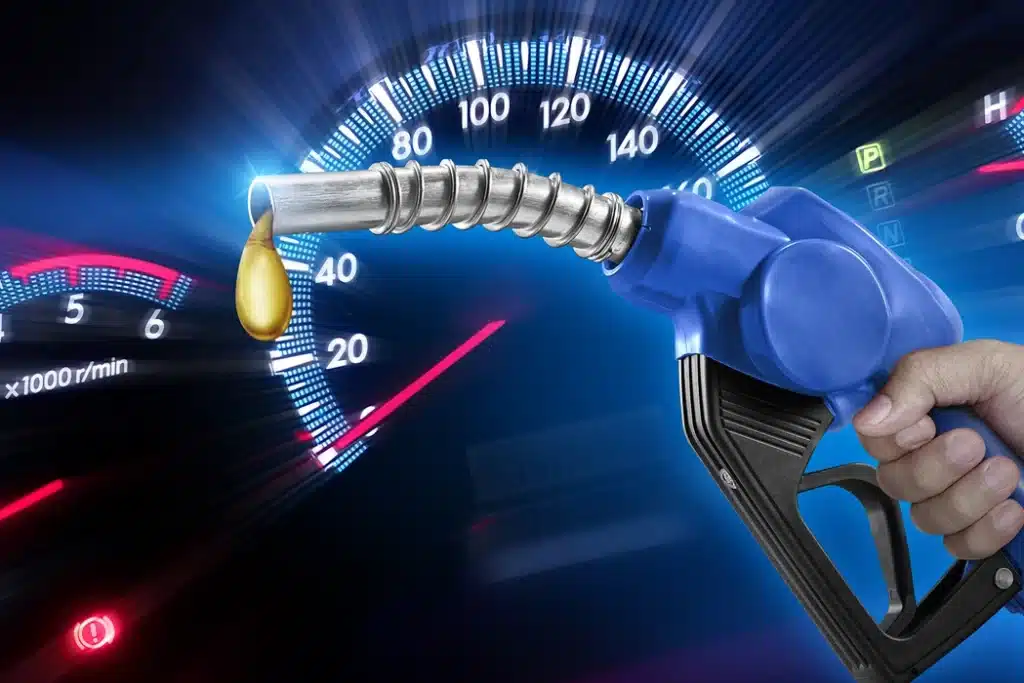Asset utilization refers to the efficient and effective use of a company’s assets to generate revenue. It involves not just the mere ownership of assets, but strategically leveraging them to maximize returns. Assets, in this context, can include a wide range of items, from tangible resources like machinery and real estate to intangible assets such as patents, software, and brand value.
The primary goal of asset utilization is to ensure that every asset a company owns contributes optimally to its overall profitability and growth. This process requires a balance between the use, maintenance, and upgrade of assets to keep them performing at peak efficiency over their useful life.
In an increasingly competitive market, the ability of a company to effectively utilize its assets can be a significant differentiator. High levels of asset utilization lead to several key benefits:
- Increased Profitability: Efficiently used assets contribute more significantly to revenue, without necessarily increasing costs. This leads to higher profit margins and overall financial health for the company.
- Enhanced Operational Efficiency: Proper asset utilization ensures that all resources are used to their fullest potential, reducing waste and inefficiencies in operations.
- Better Investment Decisions: Understanding how assets contribute to a business’s success aids in making more informed decisions about future investments, whether it’s acquiring new assets or divesting from underperforming ones.
- Competitive Advantage: Companies that excel in asset utilization are often able to offer better products or services at lower costs, giving them an edge in the marketplace.
- Improved Asset Lifespan: Effective management and utilization of assets can prolong their lifespan, reducing the need for frequent replacements and thereby saving costs in the long run.
As we further explore the intricacies of asset utilization, this article will examine how businesses can track, manage, and optimize their assets for maximum returns, ensuring sustainability and growth in a dynamic economic environment.
Understanding Asset Utilization: Key Components
Asset utilization hinges on several core components that businesses need to understand and implement effectively:
- Identification of Assets: The first step in asset utilization is identifying all the assets a company possesses. This includes tangible assets like equipment, inventory, and property, as well as intangible assets like software, intellectual property, and brand equity.
- Asset Valuation: Determining the current and potential value of each asset is crucial. This helps in understanding the contribution of each asset to the company’s bottom line and in making informed decisions about where to invest resources.
- Performance Measurement: Regularly assessing the performance of assets is vital. This involves tracking the output or benefits derived from each asset and comparing it against the cost of maintaining or operating it.
- Optimization of Use: This entails deploying assets in a manner that maximizes their efficiency and contribution to business goals. It might involve reallocating assets to different areas of the business where they can be more effective.
The Role of Asset Tracking
Asset tracking is an indispensable component of asset utilization, providing the foundational data necessary for effective management. It involves monitoring the location, status, and performance of assets throughout their lifecycle. Effective asset tracking allows businesses to:
- Ensure Optimal Deployment: By knowing where assets are and how they are being used, businesses can optimize their deployment to areas where they are most needed and most effective.
- Prevent Loss and Theft: Real-time tracking helps in quickly identifying misplaced, underutilized, or stolen assets.
- Improve Maintenance Scheduling: Tracking usage and condition helps in scheduling timely maintenance, thus preventing downtime and extending asset life.
- Enhance Decision Making: Accurate asset data aids in making informed decisions about asset purchase, retirement, or reallocation.
Techniques and Tools for Asset Tracking
Several techniques and tools are used for asset tracking, each suited to different types of assets and business needs:
- Barcode Scanning: A cost-effective and simple method for tracking physical assets. Barcodes can be scanned using handheld devices, making it easy to update and access asset information.
- RFID Technology: Radio-frequency identification (RFID) allows for automatic identification and tracking of assets. RFID tags attached to assets communicate with readers to update location and status information in real-time.
- GPS Tracking: Particularly useful for mobile assets like vehicles, GPS tracking provides real-time location data and can help in route optimization and monitoring usage.
- Asset Management Software: This software centralizes all asset information, providing a comprehensive view of assets across the organization. It can track asset performance, maintenance schedules, and depreciation.
Integrating Technology in Asset Tracking (RFID, IoT, etc.)
The integration of advanced technologies like RFID and the Internet of Things (IoT) has revolutionized asset tracking:
- RFID Integration: Unlike barcodes, RFID tags don’t require line-of-sight to be read. They can track assets over longer distances and through various materials, making them ideal for complex environments.
- IoT and Smart Assets: IoT technology enables assets to be “smart” by embedding sensors and connectivity. Smart assets can autonomously report their status, usage, and even predict maintenance needs.
- Data Analytics and AI: Coupled with asset tracking, AI and analytics can provide deep insights into asset performance and usage patterns. This can lead to predictive maintenance, optimized asset allocation, and better lifecycle management.
- Cloud-Based Solutions: Cloud platforms allow for the integration of asset tracking data from various sources, providing accessibility and scalability. They facilitate real-time tracking and analytics, enabling more dynamic asset management.
By effectively implementing these techniques and technologies, businesses can ensure that their assets are not only accounted for but are also contributing optimally to the organization’s objectives.
Managing Assets for Maximum Utilization
To maximize the returns from assets, it’s crucial to manage them strategically. Here are some key strategies:
- Lifecycle Management: Understand the lifecycle of each asset from acquisition to disposal. This includes planning for the purchase, usage, maintenance, and eventual replacement or disposal of assets.
- Regular Maintenance and Upkeep: Ensure regular maintenance to keep assets in optimal working condition. This minimizes downtime and extends the asset’s useful life.
- Utilization Analysis: Continuously analyze how assets are being used. Identify underutilized assets and consider reallocating or repurposing them to enhance overall productivity.
- Training and Employee Engagement: Ensure that employees are well-trained in using and maintaining assets. Engaged and knowledgeable employees can significantly improve asset utilization and care.
- Performance Benchmarking: Set benchmarks for asset performance and regularly compare actual performance against these standards to identify areas for improvement.
The Impact of Proper Maintenance and Upgrades
Proper maintenance and timely upgrades are vital in asset management for several reasons:
- Extending Asset Lifespan: Regular maintenance prevents the premature deterioration of assets, thereby extending their operational life.
- Improving Efficiency and Productivity: Well-maintained assets often operate more efficiently, increasing productivity and reducing operational costs.
- Preventing Failures and Downtime: Regular maintenance helps in identifying potential issues before they lead to breakdowns, thus preventing costly downtime and disruptions.
- Upgrades and Modernization: Upgrading assets with the latest technologies can improve their performance, efficiency, and relevance in the current business environment.
Balancing Depreciation and Investment in Assets
Balancing the depreciation of assets with investment in them is a critical aspect of asset management:
- Understanding Depreciation: Businesses must understand how assets depreciate over time and how this affects their value and performance.
- Budgeting for Replacement and Upgrades: Allocate budgets for the replacement of assets at the end of their useful life and for upgrading them when needed.
- Cost-Benefit Analysis: Before investing in new assets or upgrading existing ones, conduct a cost-benefit analysis to determine if the investment will yield a favorable return.
- Asset Disposal: Decide when it’s more cost-effective to dispose of an asset rather than continue maintaining it. This includes considering resale value, recycling options, or other forms of disposal.
By employing these strategies, businesses can effectively manage their assets to ensure maximum utilization and return on investment. This not only contributes to the company’s current financial health but also positions it for sustainable growth and competitiveness in the long term.
Analyzing Asset Utilization Data: Key Metrics
Analyzing data related to asset utilization involves several key metrics, which provide insights into how effectively assets are being used:
- Utilization Rate: Measures how much an asset is being used compared to its full capacity. For instance, this could involve tracking the usage hours of machinery against its total available hours.
- Return on Assets (ROA): Calculates how efficiently a company generates profit from its assets. It’s a critical financial metric indicating the overall effectiveness of asset management.
- Maintenance Costs vs. Output: Compares the cost of maintaining an asset with the revenue or output it generates. This helps in assessing whether the asset is cost-effective.
- Downtime and Availability: Monitors the amount of time assets are not operational due to maintenance or failures, impacting overall productivity.
Using Data Analytics to Improve Asset Performance
Leveraging data analytics in asset management can transform raw data into actionable insights:
- Predictive Maintenance: Analyzing usage and performance data helps in predicting when an asset might require maintenance, thereby preventing unexpected breakdowns.
- Performance Optimization: Data analytics can identify inefficiencies in asset usage, suggesting areas where performance can be improved.
- Lifecycle Analysis: By analyzing data over the asset’s lifecycle, businesses can make informed decisions about when to upgrade, replace, or retire assets.
Using these analytics approaches leads to a more proactive and informed asset management strategy, enhancing both the performance and lifespan of assets.
Case Studies: Successful Asset Utilization Strategies
- Manufacturing Industry: A leading automobile manufacturer implemented an asset ledger system for their production equipment. This system enabled them to identify underutilized assets and optimize their allocation across different production lines, significantly reducing downtime and enhancing overall productivity.
- Healthcare Sector: A large hospital network used an asset ledger to track medical equipment usage. By analyzing this data, they optimized the distribution of equipment like MRI machines and surgical instruments across departments, reducing patient waiting times and improving operational efficiency.
- Transportation and Logistics: A global logistics company utilized an asset ledger to track their fleet of trucks. Analysis of this data helped them identify low-utilization routes and optimize delivery schedules, improving fuel efficiency, reducing operational costs, and boosting overall productivity.
- IT Infrastructure: A multinational corporation tracked the utilization of their servers and data centers using an asset ledger. By consolidating workloads of highly utilized servers, they achieved better resource allocation and performance, avoiding unnecessary investments in additional infrastructure.
These case studies demonstrate the powerful impact of asset utilization data in various sectors, leading to significant improvements in efficiency, cost reduction, and overall business productivity.
The Financial Implications of Asset Utilization
The effective utilization of assets has a direct and significant impact on Return on Investment (ROI) and overall profitability:
- Enhanced ROI: Optimal asset utilization increases the returns generated from each asset, contributing to a higher ROI.
- Reduced Operational Costs: Efficient use and management of assets can lead to lower operational costs, increasing the company’s profit margins.
- Increased Revenue Generation: Effectively utilized assets can lead to increased production capacity or improved service quality, thus driving revenue growth.
Cost-Benefit Analysis of Asset Management Strategies
Conducting a cost-benefit analysis is crucial in evaluating the financial viability of different asset management strategies:
- Initial Investment vs. Long-term Gains: Weigh the upfront costs of acquiring, upgrading, or maintaining assets against the long-term financial benefits they are expected to provide.
- Depreciation Impact: Consider how the depreciation of assets affects financial statements and tax implications, and how this impacts overall profitability.
- Opportunity Costs: Analyze the opportunity costs involved in allocating resources to certain assets over others. This includes considering whether investing in certain assets may preclude other potentially more profitable investments.
- Risk Assessment: Factor in the risks associated with different asset management strategies, such as the risk of technology obsolescence, market changes, or unexpected maintenance issues.
Final Thoughts
Looking ahead, asset utilization in business is poised to become more sophisticated and integral to strategic decision-making. Companies will increasingly rely on advanced technologies to gain insights, optimize usage, and enhance the value of their assets.
This evolution will not only drive operational efficiencies but also foster innovation and competitiveness in various industries. The ability to adapt to and embrace these changes will be crucial for businesses seeking sustainable growth and success in an increasingly dynamic and technology-driven business environment.
Reach out to your ZenduiT consultant today to learn more about managing your assets and maximizing your returns.










































